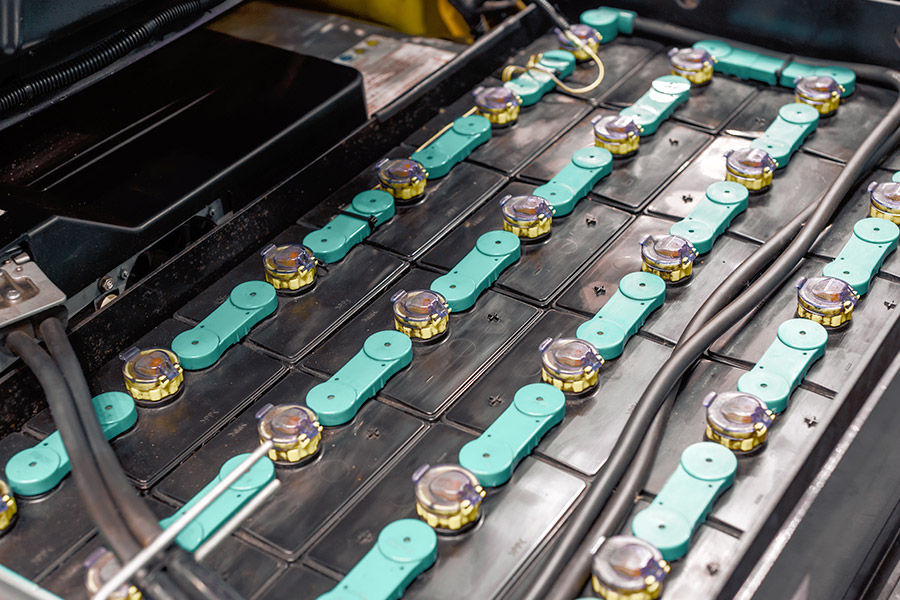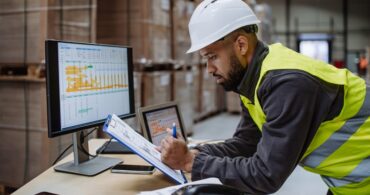Thin plate pure lead (TPPL) batteries are not a new technology. However, their use for forklift applications is relatively new—and their introduction to the field stirred up a bit of a hornet’s nest. Let’s examine some of the most common TPPL myths and clarify a few misconceptions so you can use TPPL technology and products to power your industrial equipment and improve operational efficiency.
Full disclosure: We are Texas Motive Solutions, and we sell forklift batteries. All kinds of forklift batteries: lead-acid, lithium and, yes, thin plate pure lead (TPPL). But what is a TPPL battery?
TPPL is a type of absorbed glass mat lead-acid battery. It utilizes slimmer electrodes (i.e., thin plate) and a higher purity lead (i.e., pure lead) than those employed in conventional lead-acid battery designs. Unlike a lead-acid battery that requires frequent watering, a thin plate pure lead battery does not need to be watered or equalized.
However, the intent of this article is not to sell you a thin plate pure lead industrial battery. We believe there is no “best” forklift battery except the best one for you. Different applications require different solutions. For example, a lithium battery may be better suited to your systems than a thin plate pure lead battery. That’s why we offer a complimentary forklift fleet performance analysis. We need to understand your business needs before we can discover the ideal battery solution and provide you with guidance on whether a forklift truck lithium battery vs. TPPL battery is right for you.
Now, and this is purely theoretical, picture a scenario where a company only sells one category of forklift battery, and it’s not TPPL. It is possible that the company would see TPPL as a threat to their bottom line and push misinformation that promotes one type of battery over the other.
However it happened (and we may never know), there is a lot of misinformation about TPPL batteries available. Let’s take a look at some of the myths and clear up a few TPPL misconceptions.
Myth #1: You need roughly double the battery capacity to do the same work as lithium.
Verdict: Misleading
This statement entirely depends on the type and quality of lithium used for the battery.
Some lithium batteries are made with very low energy density iron phosphate chemistry. These batteries are not certified by forklift manufacturers, which is a significant safety issue. These lithium batteries offer the same performance and warranty as TPPL but at a higher price and with more safety risks.
However, the flip side to a low energy density lithium battery is a high-quality, energy-dense lithium battery utilizing nickel manganese cobalt (NMC) technology, such as the HAWKER® FLEX® Li³, which is UL certified to automotive standards. It does require roughly double the thin plate pure lead battery capacity to reach the same workload as an NMC lithium battery. However, there are more factors to consider than simply battery capacity. For example, the price point of TPPL batteries is lower than an NMC lithium battery. So, if an application has the charge time available for a TPPL battery, it may make financial sense to utilize TPPL over NMC. On the other hand, a hard-running, 24-hour-a-day application that does not have available TPPL charge time will likely show an ROI by selecting NMC.
Myth #2: You can’t displace the battery below 40%.
Verdict: False
You can discharge TPPL below 40%, to 30% and even 20% charge.
However, keeping a TPPL battery at or above 40% will prolong the battery’s life. A TPPL battery will typically last five to six years when controlled at or above 40% state of charge. Since modern forklifts are not designed to discharge to a 20% state of charge, they have adjustable lift cutouts that will keep the battery above 40% (or any other) state of charge.
Once again, when choosing between TPPL and NMC, it is essential to evaluate the cost of the batteries. High-quality lithium is speculated to last ten years by some smaller lithium manufacturers. Typically, TPPL batteries cost roughly 30%-40% compared to lithium batteries. So, for a TPPL-appropriate application, it’s possible to get 12 to 15 years of usage for the same price point as NMC by buying one thin plate pure lead battery and charger and replacing the battery every five to six years. In fact, the ROI improves even further for applications that can keep the charge above 50% because the TPPL battery can last up to seven years.
Myth #3: The warranty for a TPPL battery is less than half of a comparable lithium battery.
Verdict: Short answer, “Yes, with an if.” Long answer, “No, with a but.”
This statement isn’t wrong. Generally speaking, the warranty for a TPPL battery is less than half that of an NMC battery. However, and stop me if you’ve heard this before, a TPPL battery costs less than half the cost of an NMC battery, so the difference is understandable. Plus, and this is key, the warranty also does not dictate lifespan. As mentioned, when the state of charge is kept at a high percentage, a TPPL battery can last up to seven years with minimal maintenance. Meaning a battery’s life can significantly outlast its warranty period.
Myth #4: TPPL has a hard time charging to 100%.
Verdict: False
All lead batteries operate best between 30% and 80% state of charge. When a TPPL battery charges past 80%, the charging speed slows down. TPPLs charge faster than a standard lead acid battery because the pure lead does not generate much resistance and can take a faster charge without too much heat buildup.
During a workday, the goal is to keep the battery in that window by charging during breaks, lunches and any downtime where a forklift is idle for more than 15 minutes.
To discover if your business has the available charge time for TPPL or if NMC or a standard lead acid battery is the right choice, we offer a complimentary forklift fleet performance analysis to discover the best option for your business. Please call our forklift repair service team at (888) 316-2459 to discuss your forklift battery and accessory needs. You can also fill out this form to request additional resources, learn about our services and discover everything we can do for you.



